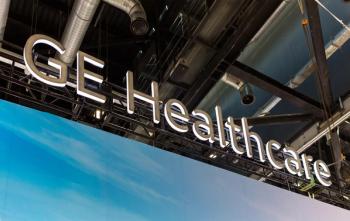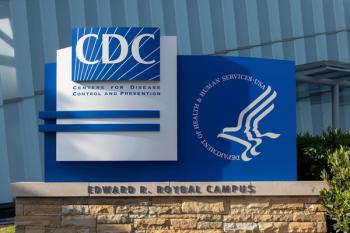
U.S. health care must choose: market discipline or government regulation?
Key Takeaways
- U.S. health care expenditures are projected to reach 20.3% of GDP by 2033, with inputs exceeding outputs, highlighting inefficiencies.
- Primary care visits declined by 7.3% from 2018 to 2024, while behavioral health services increased by 43.7%.
As spending climbs and value plummets, Trilliant Health proposes hard questions to buck negative trends.
High costs, low value and less than optimal outcomes continue to be problematic in the U.S. health care system, even as patients feel they personally get good treatment, according to an analysis from Trilliant Health.
The
“The reputation of the U.S. health care system precedes itself – it is expensive, complex and inefficient,” Trilliant Health Chief Research Officer Allison Oakes, PhD, said in a news release. “Understanding why begins with the recognition that, regardless of tax status, the ‘system’ is a collection of profit-seeking businesses treating illness — ‘no margin, no mission’ — rather than a thoughtful and comprehensive approach to promoting health.”
At a crossroads — and in a ‘doom loop’
The report analyzed the health care system across six trends and reached the conclusion that “the health economy is at a crossroads.” Health care needs market discipline to control costs, improve outcomes, and generally break through the current “doom loop” working against reform. If not, governmental controls could be a solution — but not necessarily one that physicians, patients, health systems, researchers, insurers, and drug makers want.
The solution could come in “first principles” thinking that deconstructs health care to its most fundamental truths. Trilliant Health suggested questions that health care leaders must ask:
- Is it necessary? The health care system is intended to connect patients with physicians and other clinicians for medical care. Leaders can ask what that means for everyone else.
- Which stakeholders currently provide value to the system by delivering essential services or goods? In a functioning market, patients could compare providers based on measurable outcomes and costs, rewarding good performers and pressuring high-cost, low-value ones to adapt or close.
- Do you want to make change happen, or do you want change to happen to you? “The critical question, then, is whether the health economy will undertake reforms that align incentives with value for money, or whether inaction will invite externally imposed solutions that redefine the system on less favorable terms,” the report said.
Neglecting the fundamentals, including primary care
Trilliant Health identified primary care among the key trends, and measured more patients used behavorial health services than primary care in 2024. From 2018 to 2024, primary care visits net dropped 7.3%, while behavioral health services grew by 43.7%
The United States lags in primary care capacity and utilization, with 72.7% of U.S. counties designated as primary care professional shortage areas. Meanwhile, specialist physicians are averaging almost twice the salary of primary care doctors.
Trilliant Health noted a significant change in retail primary care, even in spite of multi-billion-dollar investment. CVS Health is scaling back its retail efforts, Amazon is pivoting to specialty pharmacy, while Walgreens and Walmart largely have exited the market, though Walmart retains a strong retail pharmacy infrastructure.
Price and affordability
Since 2009, medical care prices are up 54.5%, outpacing the 45.7% increase of overall consumer prices. Health insurance premiums have climbed 85.7% from 2010 to 2024. For patients who need care, medical debt breeds financial toxicity, creating negative effects on patient financial well-being.
Can patients shop around? Not easily, because insurance
Demographics and lifestyle
Americans spend more on health care but have lower life expectancies than residents of other developed nations. Avoidable mortality is bad compared with other developed nations, and getting worse. Chronic disease death rates are accelerating, with growth of liver disease, stroke and diabetes mortality outpacing heart disease and cancer. Mortality grew for adults aged 18 to 44 years in the time 2018 to 2024, and the number of births in the nation is not offsetting adults aging into Medicare, the report said.
Fraud, waste and abuse remain pervasive
The administration of President Donald J. Trump has targeted fraud, waste and abuse in government spending.
Trilliant Health did not claim a single entity, business or organization is cheating the health care system. However, upcoding in emergency departments has pushed up spending, and United Healthcare “frequently pays itself more than everyone else,” the report said.
The report noted Americans use less health care, but spend more money on it, than in other countries. Negotiated payment rates “have inexplicable variation,” with academic medical centers negotiating higher rates than safety net hospitals. Overall, hospitals are spending more money on administration than direct patient care, with administrative costs growing faster than patient care spending.
So far, return on investment has been unclear for artificial intelligence solutions, while quality reporting and electronic health records both have relatively low returns on investement, the report said.
Care settings and therapies
Hospitals remain the lead facility for heart transplants, but procedures including coronary stents, cancer treatments and joint replacements are moving to less intensive and expensive outpatient settings, the report said. Ambulatory surgical centers (ASCs) performed 50.8% of ASC-eligible surgeries in 2024, topping hospital outpatient departments (HOPDs) (43.7%) and hospital inpatient treatment (5.5%). Even so, HOPDs generally have larger reimbursement rates than ASCs.
Health care utilization grew from 2023 to 2024, but remains below pre-pandemic levels. Physician offices continue to be a mainstay site of care, with more than 200 million visits in 2024. Trilliant Health noted most patients are not loyal to a single health system
Agents for change
Trilliant Health said the sixth trend was: “Value for money or price controls?” Americans rate their personal health care quality higher than the overall health care system, with 54% saying U.S. health care is in a state of crisis.
As for effecting change, employers are a huge payer into the system, but have failed to slow the growth of health care costs. Instead, they focus on increasing patient cost sharing via coinsurance, copays and deductibles that in turn reduce patient use of low-value and high-value care, the report said. Employers know that happens but continue to focus on increasing premium contributions, moving to high-deductible health plans and implementing wellness programs, the report said.
Health care companies know where their money is best spent — in the nation’s Capitol and statehouses, where health care lobbying reached $959.5 million in 2024. Meanwhile, the health care system cannot sustain high prices for prescription drugs, the report said.
Newsletter
Stay informed and empowered with Medical Economics enewsletter, delivering expert insights, financial strategies, practice management tips and technology trends — tailored for today’s physicians.


















